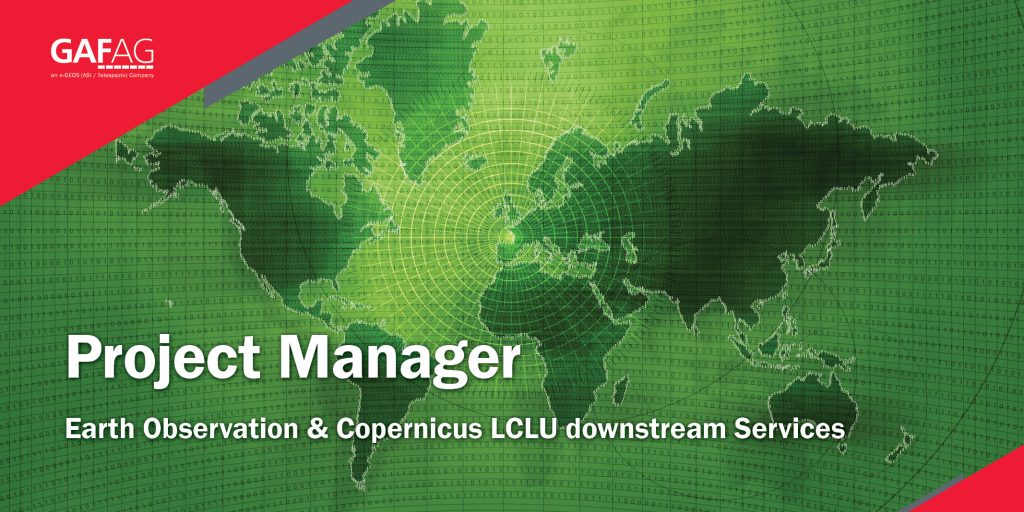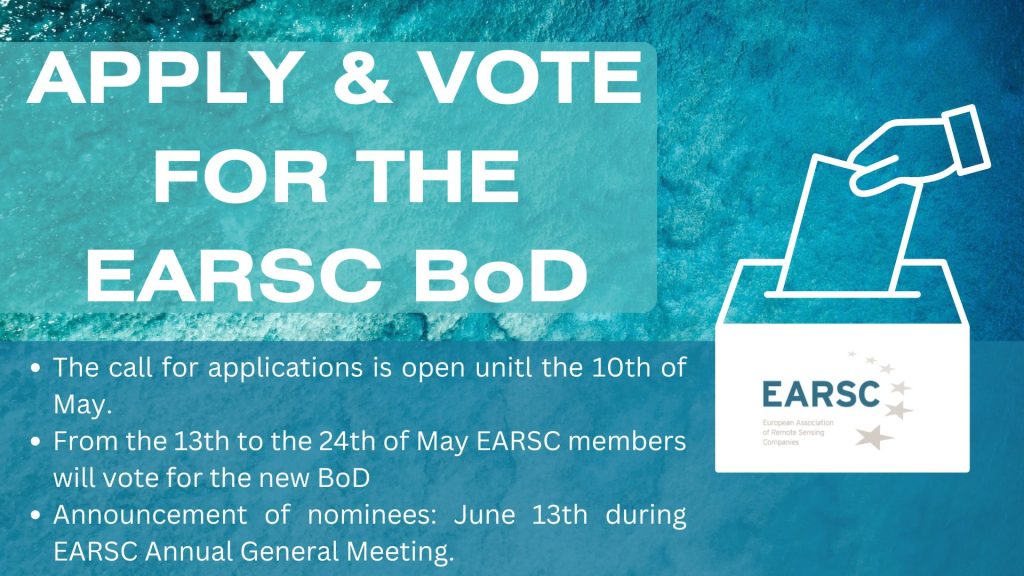
The voice of the Earth Observation
Industry
Barents bloom, Sentinel-2A - processed by ESA, CC BY-SA 3.0 IGO

Discover the largest European
Earth Observation Network
Lake Balkhash, Kazakhastan, Sentinel 2 - processed by ESA, CC BY-SA 3.0 IGO

EARSC promotes the understanding
of our Planet for societal benefits
Brussels, Spot 5 Sqtellite - Airbus Defence and Space
EARSC 4 Pillars
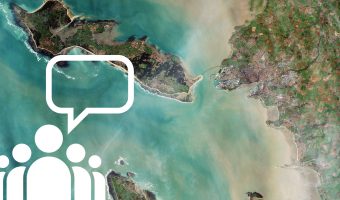
Representing the Members
The core pillar of our activities is to support and promote our members. We achieve this goal mainly through projects which we undertake (see projects). Members’ views are gathered through a series of ad-hoc working groups dedicated to important topics. We inform our members through a monthly report and a dedicated portal about important news and information, as announced bid opportunities – and dedicated e-mails for key items.
Read More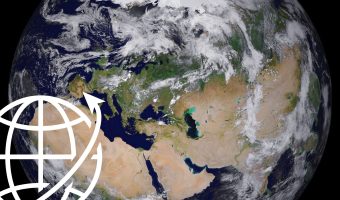
Market development & Internationalization
EARSC is engaged in a wide range of activities to develop new markets and business opportunities for our members. Our strategy is to engage users, identify needs and stimulate demand for European EO services both in Europe and abroad with complementary commercial and geographical approaches.
Read More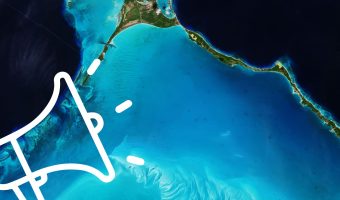
Promoting the industry
EARSC employs a range of sophisticated digital tools to promote the European EO sector. EARSC has three main digital tools which cover creating a shared vocabulary (EARSC TAXONOMY) , providing a common space to find EO companies, and a common space to discover ‘online’ EO services.
Read More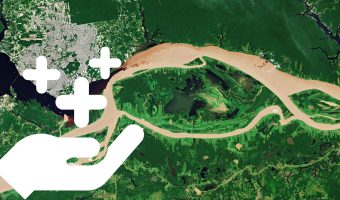
Showing the value of Earth Observation
The Earth observation sector delivers a wide range of social and environmental and economic benefits to citizens of Europe and the world. To properly and consistently value these impacts, EARSC leads the Sentinel Benefits Study (SeBS) project in which we measure the total societal impact of products and services coming from Sentinel satellite data.
Read MoreEARSC NEWS
Copernicus assists in monitoring risks and planning for response to marine pollution
© Copernicus. In March 2017, following an armed attack on the oil port of Es Sider in Libya, the Regional Marine Pollution Emergency Response Centre for Mediterranean Sea (REMPEC) activated the Mediterranean Operational Network for the Global Ocean Observing System (MONGOOS) services to simulate the worst-case scenario in the case of a potential oil spill incident. This simulation, based on data provided by the Copernicus Marine Environment Monitoring Service, in combination with other sources, including local information from REMPEC Focal Points in Libya, providing forecasts on currents and wind, showed that in only 24 hours about 44% of the oil would reach the coast. This information has proven vital for public authorities to prepare for any risk from accidental marine pollution.
ISRO develops algorithm to clear out haze from images captured by Earth observation satellites
One of the many facilities of ISRO across the country, the Space Applications Centre in Ahmedabad has come up with an algorithm that clears the haze from images captured by Earth observation satellites such as the CartoSat series of satellites.
Ursa Analyzes SAR Imagery and e-geos to Monitor Hurricane Harvey Flooding
(By Kendall Russell | August 28, 2017) Ursa Space System, with support of satellite images furnished by e-Geos, a subsidiary of the Italian Space Agency (ASI) and Telespazio, is monitoring areas affected by Hurricane Harvey in Texas.
SPOT 6/7 imagery to feed Satshot’s mapping platforms for improved efficiency of US agriculture
Chantilly, VA, 28 August 2017 – Airbus Defence and Space has entered into an agreement with the GIS mapping engine operator Satshot to provide high-resolution SPOT 6/7 satellite data over a large area of the corn and wheat belt within the continental United States. SPOT 6/7 data is integrated into the Satshot platform, which can be used for deep analysis of specific farmland for further improved operations and efficiency.
Landslide in the Swiss Alps: Seen from Space
(© European Space Imaging, Munich, 28/08/17) On Wednesday August 23rd a huge chunk broke off the side of a mountain in Bondo, in the southern Swiss Alps, at speeds of more than 250km/h. It is suspected that the resulting landslide swept away eight hikers.
Giovanni: The Bridge Between Data and Science
(By Zhong Liu and James Acker) Using satellite remote sensing data sets can be a daunting task. Giovanni, a Web-based tool, facilitates access, visualization, and exploration for many of NASA’s Earth science data sets.
Copernicus video presentations available for training
© Copernicus website . A total of 68 training videos complete with presentations and module demonstrations on the Copernicus programme – such as material on funding instruments, access to Copernicus data and information and the many uses thereof – are at your disposal. Entrepreneurs, developers, GI professionals and public authorities, as well as all interested stakeholders are encouraged to watch our videos and discover how Copernicus fits into their world.
Results EO Industry Survey, September 2017
We are very pleased to be able to present the results coming from the survey we conducted into the state and health of the European EO services industry. It has been an intensive exercise for us but we are pleased with the results. We are very grateful to all companies that have spent their time responding to our questions. The report is containing the principal industry statistics.
Using Satellites to Monitor Progress toward the SDGs
The plummeting cost of satellite data in the past decade has made earth observation (EO) and geospatial information more attractive than ever for addressing poverty, monitoring environmental changes, and stimulating economic growth – among other objectives. It is especially valuable in developing countries, which often do not have adequate monitoring systems to track progress on the Sustainable Development Goals and other global and national goals.
Sentinel-1 Speeds up crop insurance payouts
(17 August 2017) For the first time in India, a state government is using satellites to assess lost crops so that farmers can benefit from speedy insurance payouts.
UN-GGIM Welcomes Alignment of Strategic Framework with 2030 Agenda
© Ana Maria Lebada Blog (4 August 2017) The UN Committee of Experts on Global Geospatial Information Management (UN-GGIM) discussed implementation of the Sustainable Development Goals (SDGs) during its seventh session. Senior officials and executives from national geospatial information and statistical authorities within Member States and international geospatial experts from across the globe welcomed the alignment of GGIM’s Strategic Framework with the 2030 Agenda for Sustainable Development and discussed ways to support the alignment.
EOMALL ITT: Develop an on-line Marketplace for the EO Service sector
The Objective of this ITT is to develop an on-line Marketplace for the EO Service sector, as defined by EARSC study (MAEOS). Known as eoMALL, the platform will enable the interactive promotion of downstream EO-based products services focused on the needs of a global user-base. Specific attention will be given to 2 or 3 market segments with customer stakeholder involvement to ensure a use-oriented solution.
Precision farming via satellite imaging
27 July 2017. Precision farming is set to become even more precise with a new camera drawing on satellite imaging.
Thanks to research with ESA on new cameras, hyperspectral cameras flying on drones are now able to see details as small as 4–5 cm.
The Commercial UAV Show: New Applications and Opportunities for UAVs
The Show takes place 15-16 November at the ExCel in London. Now in its 4 th year The Commercial UAV Show has released the full conference agenda which includes contributions from NASA, BP and the UK Ministry of Defence.
Planet wins second NGA satellite-imagery contract
WASHINGTON — Planet has won a second contract to provide satellite imagery to the U.S. National Geospatial Intelligence Agency (NGA), beating out contenders UrtheCast, Orbital Insight and Sky Hawk Drone Services.
MEMBERS NEWS


